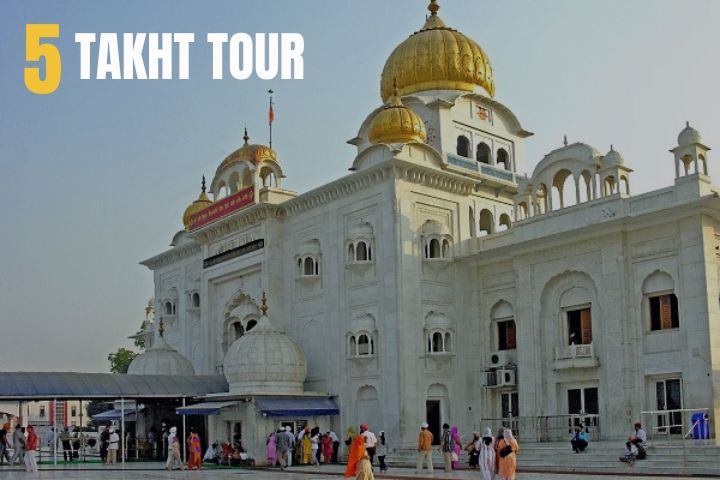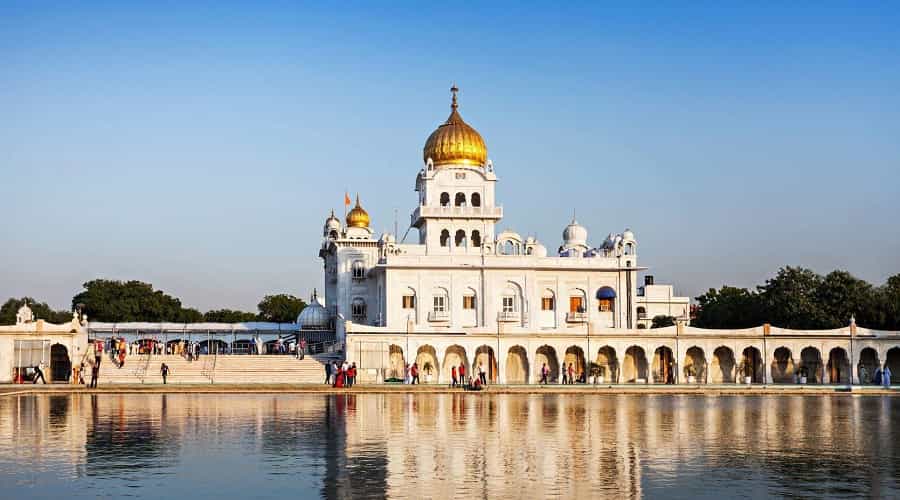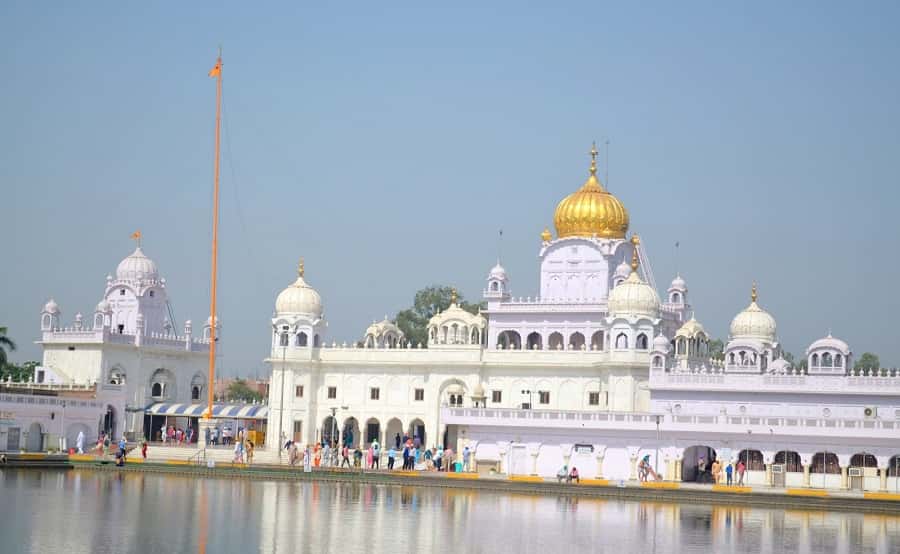5 TAKHT TOUR
Everyone should visit the 5 Takht (Panj Takht) tour five of the prominent centers of authority in Sikhism. These Takhts, having the highest Sikhism ordination for all governmental and spiritual matters, are my spiritual authorities. They are at historical Gurdwaras (Sikh places of worship) all over India in many cities.
The India is a unique country which has been the mother of all the different religions and considers all with true equality. Out of the given all, Sikhism, along with being the most brilliant among them, is also known for its heavy religious beliefs. Here are 5 Takht of India:-
5 TAKHT
1. Akal Takht Sahib
This was guided by Guru Hargobind Sahib, the sixth Guru of the Sikhs who initiated it in 1606. The name “Akal Takht” holds the Phrase “Akal” and “Takht” which represents timeless or eternal, and throne or seat respectively. Therefore, Akal Takht embodies “The Throne of the Eternal One,” or the “Seat of the Eternal” in Sikhs’ perspective.
Akal Takht Sahib which is the highest spiritual authority acts as such and it deals with questions of Sikh governance, law, as well as discipline. It has a meaning of Sikh independence and self-consciousness. The verdict of Shri Harmandir Sahib’s Akal Takht is regarded as binding on all the Sikhs the world over.
Traditionally, Akal Takht has been in charge of guiding the Sikh community and founding solutions for the problems faced by the society in many different ways, practically and religion-wise. It has not only been used as a tool to fight for survival, but also a source for rebellion against oppression and injustice.
Suggested Tour :- Hemkund Sahib Tour 2024
2. Takht Sri Keshgarh Sahib
It refers to one of the remarkable five and a half pillars, which is based on Anandpur Sahib, Punjab, India. It behaves as a significant place not only in Sikh history and religion but also witnesses people throng during religious rituals seasonally.
Coming into the existence in 1699 on Baisakhi Day, this Tarn Taran Sahib is the place where Guru Gobind Singh Ji, the tenth Sikh Guru, raised the Khalsa community, the initiated Sikh community. This event that had over the Khalsa Sajna Divas or Vaisakhi name, gave a momentous start to the Sikh community, giving it a proper seperate identity and making the Khalsa Panth (a community).
Sahib Sri Keshgarh Takht is located in the midst of beautiful scenery. One can hear here prayers and worshipping of people all the year round, with the number of visitors especially increasing in the months of celebration or religious rituals. Gurdwara complex includes the Kaal Sahib Gurdwara as main building along with a big lake and other historical structures.
Suggested Tour :- Sri Hazur Sahib Ji Gurudwara
3. Takht Sri Damdama Sahib
The spiritual central of Damdama Sahib was founded by Guru Gobind Singh in 1705, the tenth Sikh master. Here the most common name is as ‘Tarn Taran Sahib’ which is that place where Guru Gobind Singh Ji reached the final edits and published the Granth Sahib, the holy book for Sikhism. This Waheguru Bigita, which was replaced by the Damdama Sahib Bir, was written in this place. It comprises some more hymns and compositions of the guru.
Of course, the main temple compound at Takht Sri Damdama Sahib encompasses the shrine, the Akal Takht and other such places of religious implication. The march attracts various groups of Hindus, including those who align with the various philosophical, cultural, or social orientations. Within the complex there is a sarovar (pond), known as “Sarovar Sahib,” where pilgrims immerse themselves and pray.
Sikh community has been recognizing Shri Damdama Sahib as place of worship since past many centuries; it is here that they come for daily prayers, kirtan (devotional singing), and to listen to religious discourses. It also becomes the very obvious site of ceremonies or Vakhractions to note Sikh festivals or special events by the community.
Suggested Tour :- Punjab Gurudwara Tour
4. Takht Sri Patna Sahib
It is called Harimandir Sahib Patna Sahib, among other names, is one of the 5 Takht in Sikhism’s hierarchy of seats. It is over the River Ganga, at the place, where Guru Gobind Singh, the Tenth Sikh Guru, assembled his Khalsa, in Patna, Bihar, India. This place has great historical and religious value for Sikhs.
The primordial place (Sri Patna Sahib) is related Guru Gobind Singh Ji, the tenth Guru of Sikhs who was born in Patna in 1666. Takht Sri Patna Sahib ‘s Gurdwara premise accommodates several structures in its complex being the main temple, sarovar (pond) and other structures of religious and historical value.
Sri Guru Singh Sahibji Darbar comprises the birth place of Guru Gobind Singh Ji as such this place has various premises dedicated to devotees and pilgrims from all over the globe. Locals make visits to the site frequently, be it to participate in communal rituals such as the Guru Gobind Singh’s birthday, celebrated as Gurpurab.
Suggested Tour :- Sri Kartarpur Sahib Pilgrimage Tour
5. Takht Sri Hazur Sahib
It is situated in Nanded, Maharashtra, India and is known to be one of the key Sikh spiritual sites that dates back to ancient times. It is part of one of the 5 Takht in India.
This place is the such realistic place with the Guru Gobind Singh ji who used the Norm to conduct ‘durbars’ (meetings). Moreover, it is this place where the Guru wrote his famous poem Zafarnama on religious tolerance. At this spot, the grand path of Guru Gobind Singh Ji’s journey to the great beyond came to an end in 1708. The Gurdwara complex, Shaheed Ganj, also known as Takht Sri Hazur Sahib, and Ramsar is named after the room in which Guru Gobind Singh Ji left the world.
At the complex of Gurdwara Takht Sri Hazur Sahib, there is the main temple as well as a sarovar, which is named the “Hazar Sahib”. Additionally, there are structures related to the religious and historical significance.
Takht Sri Hazur Sahib acts as a center of worshiping as well as practicing the rituals, which include daily prayers, kirtan (chant) and religious discussions. The centre organise’s the events and ceremonies marking the celebrations and commemorations of Sikh festivals and historical events as well.



